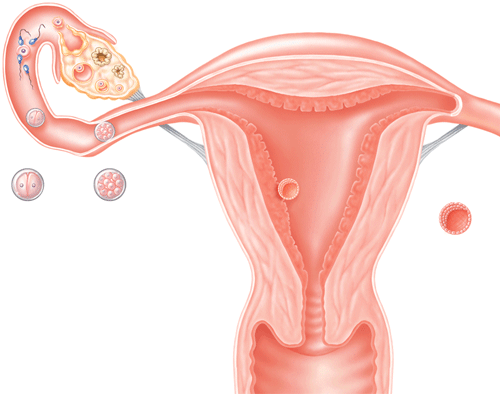Stopping contraception Ready for conception
When to stop
contraception before conceiving is fairly straightforward, although for
some methods a degree of planning is required.
Barrier methods, such as the diaphragm and condom, can be stopped immediately once you decide to start trying.
If you have an IUD, you will need to make an appointment to have it removed; you can start trying right away after this.
If you are on oral contraception, finish the package before stopping. Your cycle may take time to settle, although some women conceive as soon as they stop.
NOTE
Preparing your body for a future pregnancy will improve your chances of a healthy outcome for you and your baby
NOTE
Honestly assessing your lifestyle can motivate you to make the changes necessary for a healthy pregnancy
NOTE
Prepare mentally by having faith in your ability to conceive and each day visualizing your forthcoming pregnancy
All about conception The beginning of life
Conception occurs once an
egg is successfully penetrated by one sperm. The journey of the egg and
the sperm, although apparently simple, requires a whole complex chain of
events to occur for fertilization and implantation to take place.
| Q: |
How is the egg released and fertilized?
|
| A: |
After menstruation, the body secretes follicle-stimulating
hormone (FSH), which acts on the ovaries to mature a follicle containing
an egg. At the time of ovulation, a rise in the level of luteinizing
hormone (LH) triggers the release from the ovary of an egg, which
travels into the fallopian tube to await fertilization by a sperm. Up to
300 million sperm are released in each ejaculate, and of these only
around 200 make it into the fallopian tube. These remaining sperm swarm
all over the egg and many sperm may bind to its surface. At this stage,
the sperm then shed their bodies and tails and release enzymes to help
them burrow down into the egg. However, only one sperm can penetrate the
innermost part of the egg, known as the oocyte. Once the egg and sperm
have successfully fused together, fertilization has taken place.
|
| Q: |
How are genes inherited?
|
| A: |
The sperm and egg each contain 23 chromosomes that carry the
genetic material of the parents. As human cells contain 46 chromosomes,
once the egg and sperm fuse, their chromosomes join to provide the
fertilized cell with a full complement of chromosomes. Each egg and
sperm carries its own unique set of genes in the chromosomes, which
means that the resulting baby has its own individual genetic makeup. The
exception is identical twins; they result from one egg and sperm and
inherit the same genetic code.
|
How fertilization occurs
1. The moment of ovulation:
At about day 14 of the menstrual cycle, a mature egg bursts from a follicle in the ovary and travels into the fallopian tube.
2. The journey of the sperm:
At the point of ejaculation, sperm stream through the cervix and into the uterus to begin their journey to the egg.
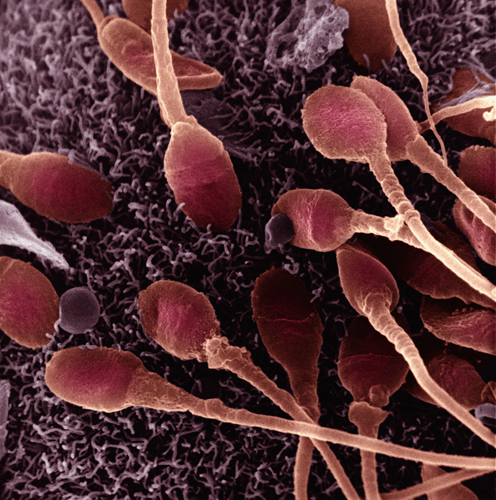
3. Sperm travel through the fallopian tube:
The fallopian tubes have a frond-filled lining that helps to fan the sperm toward the egg.
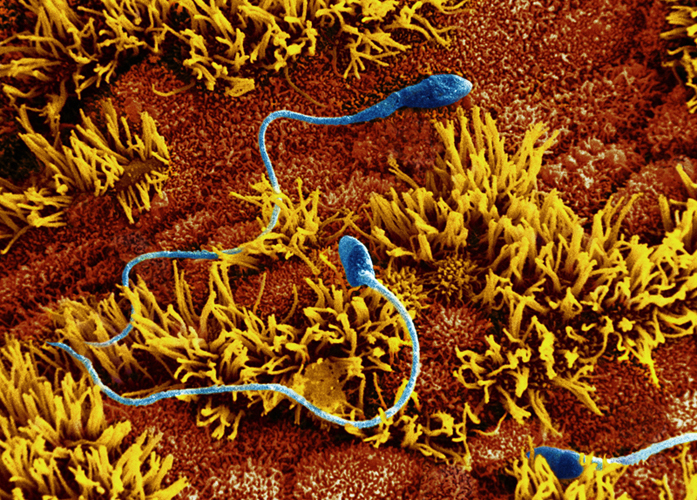
4. Fertilization of the egg:
The surviving sperm swarm all over the egg, releasing enzymes to break down the egg's outer layer. One sperm penetrates the egg.
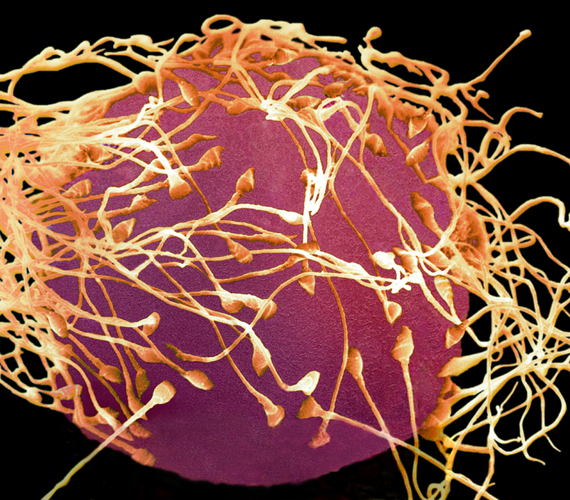
5. The division of cells:
At about four days after conception, the fertilized egg has divided repeatedly to form a bundle of cells called a morula.
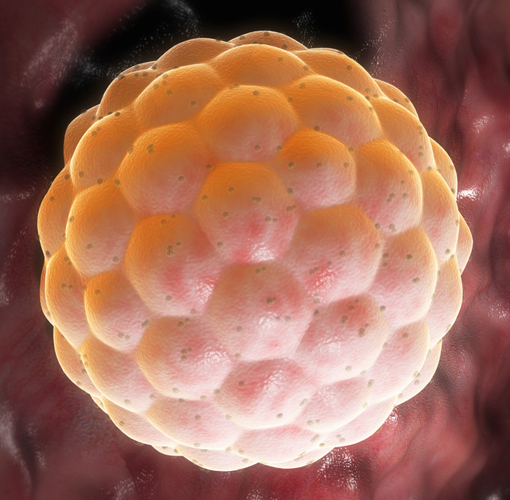
6. Implantation in the uterus:
Now known as a
blastocyst, made up of around 100 cells, the bundle burrows into the
lining of the womb and an embryo begins to form.
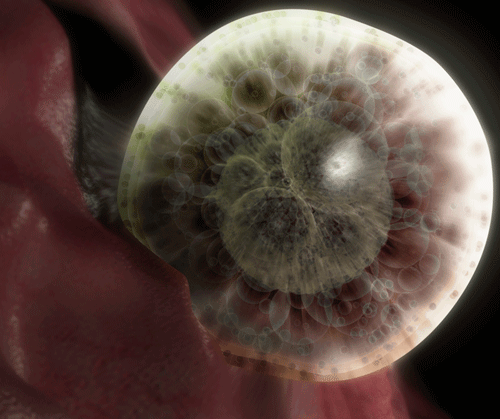
From conception to implantation
The fertilized cell
that results from the fusion of the egg and sperm is called a zygote,
which divides into two identical cells and continues to divide as it
begins its journey down the fallopian tube until it forms a bundle of
cells known as a morula. By the time it reaches the uterus, it forms a
bundle of around 100 cells, called a blastocyst. About a week after
fertilization, the blastocyst embeds itself in the lining of the uterus,
the endometrium. At this point the pregnancy is established; the
blastocyst develops into an embryo and the placenta develops. The
hormone human chorionic gonadotrophin (hCG) is released; this stimulates
the production of progesterone, which maintains the lining of the
uterus.
The journey to the uterus:
It takes approximately
seven days from the moment the egg is fertilized in the tube to the
implantation of the blastocyst in the lining of the uterus.
